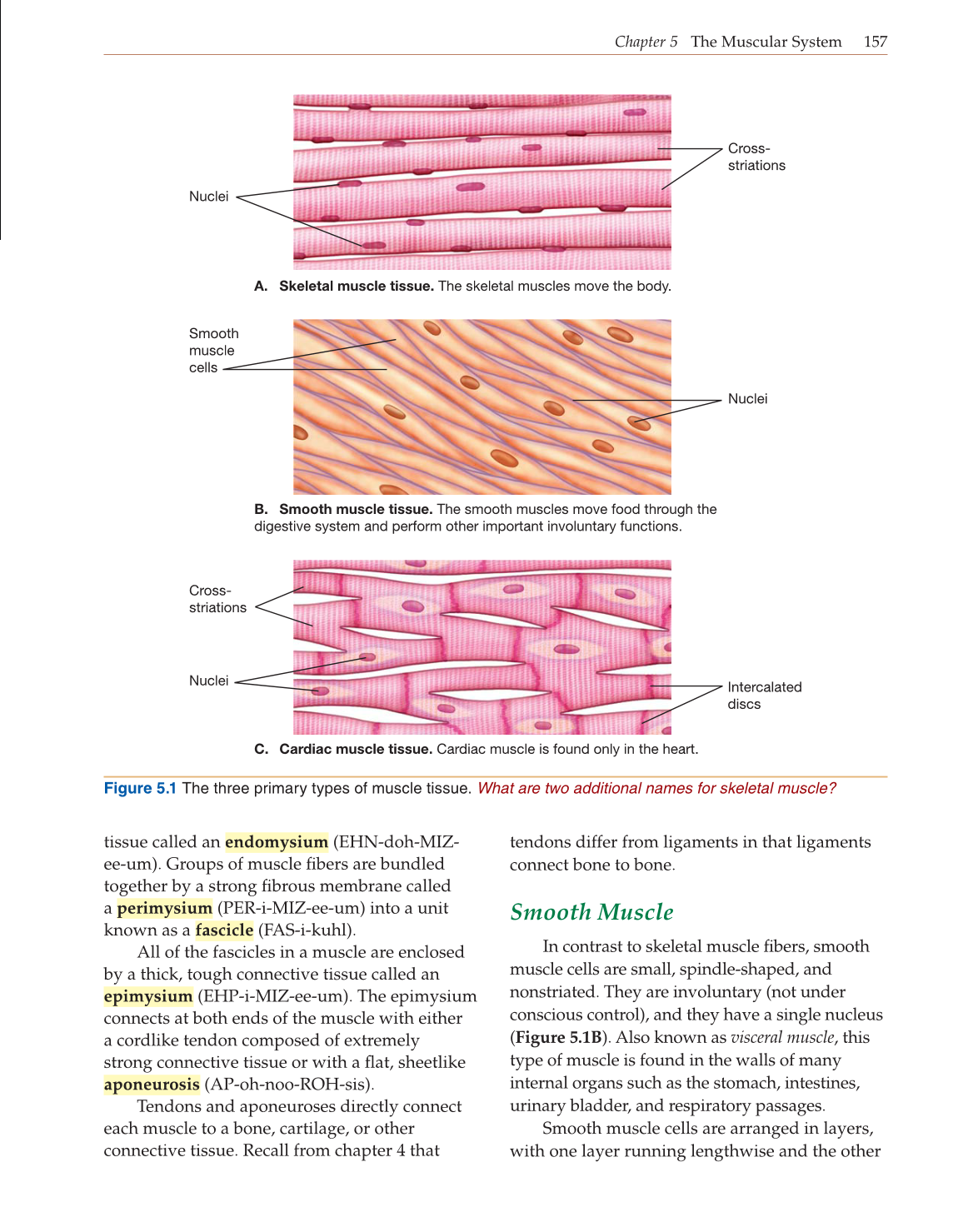Chapter 5 The Muscular System 157
tissue called an endomysium (EHN-doh-MIZ-
ee-um). Groups of muscle fi bers are bundled
together by a strong fi brous membrane called
a perimysium (PER-i-MIZ-ee-um) into a unit
known as a fascicle (FAS-i-kuhl).
All of the fascicles in a muscle are enclosed
by a thick, tough connective tissue called an
epimysium (EHP-i-MIZ-ee-um). The epimysium
connects at both ends of the muscle with either
a cordlike tendon composed of extremely
strong connective tissue or with a fl at, sheetlike
aponeurosis (AP-oh-noo-ROH-sis).
Tendons and aponeuroses directly connect
each muscle to a bone, cartilage, or other
connective tissue. Recall from chapter 4 that
tendons differ from ligaments in that ligaments
connect bone to bone.
Smooth Muscle
In contrast to skeletal muscle fi bers, smooth
muscle cells are small, spindle-shaped, and
nonstriated. They are involuntary (not under
conscious control), and they have a single nucleus
(Figure 5.1B). Also known as visceral muscle, this
type of muscle is found in the walls of many
internal organs such as the stomach, intestines,
urinary bladder, and respiratory passages.
Smooth muscle cells are arranged in layers,
with one layer running lengthwise and the other
Nuclei
Cross-
striations
Intercalated
discs
Cross-
striations
Nuclei
Nuclei
Smooth
muscle
cells
A. Skeletal muscle tissue. The skeletal muscles move the body.
B. Smooth muscle tissue. The smooth muscles move food through the
digestive system and perform other important involuntary functions.
C. Cardiac muscle tissue. Cardiac muscle is found only in the heart.
Figure 5.1 The three primary types of muscle tissue. What are two additional names for skeletal muscle?
